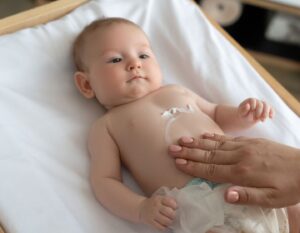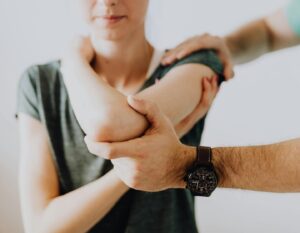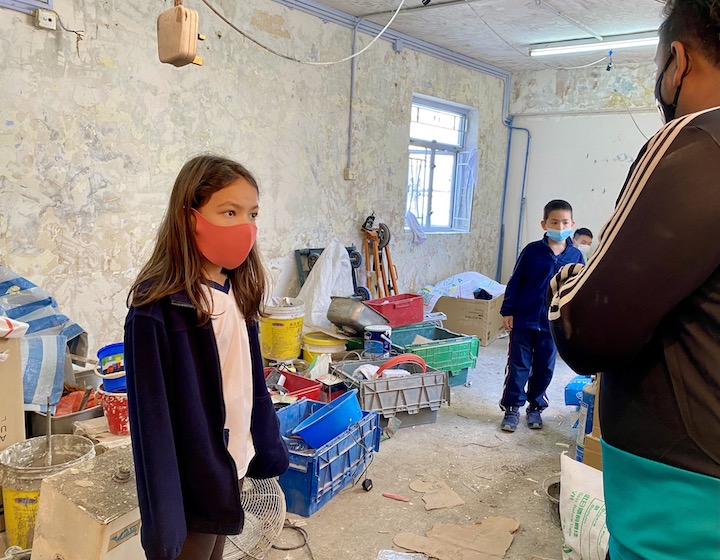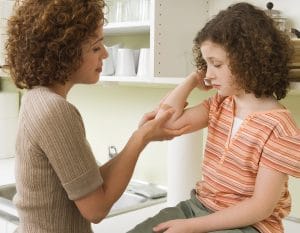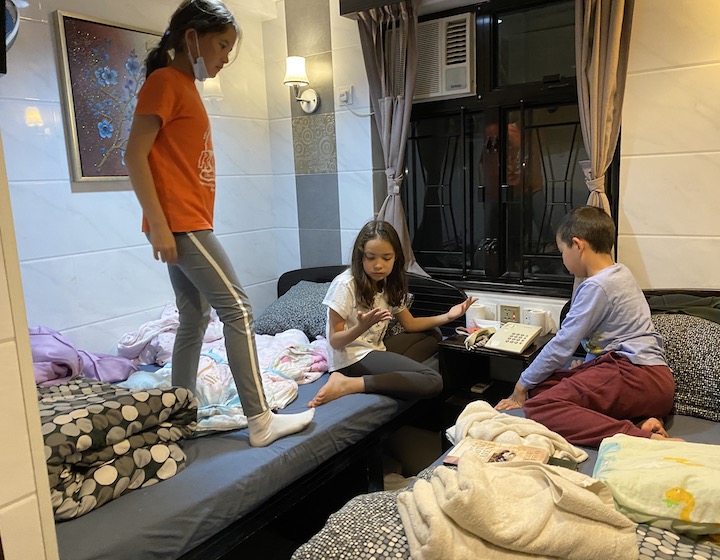
A 5-day social experiment to learn about refugees in Hong Kong taught this family some invaluable life lessons.
When Elvis Presley sang the rendition of Walk a Mile in My Shoes, he couldn’t have imagined his song of tolerance and compassion would inspire a Hong Kong mother to action. While her three children worked on their school project about Hong Kong’s refugees and asylum seekers*, Bernice Wall recalled the song’s lyrics: Walk a mile in my shoes, Before you abuse, criticise and accuse, Walk a mile in my shoes. She took the words to heart and recognised no amount of Google research would teach her children the intractable and oftentimes discriminatory situation refugees face every day. Instead of reading about their plight, she decided to show them what it is like to walk a mile in a refugee’s shoes. And so with great anticipation and not without some anxiety, the Walls committed to living five days as a refugee family. Here is their journey.
*Editor’s note: Please note that not all asylum seekers have been granted refugee status. But for purposes of brevity, the author of the post will use the broader term of refugee for both. Read here to understand the difference between a refugee and an asylum seeker.
Read More: That Mama — Sarah Vee, Founder Of Women Of Hong Kong
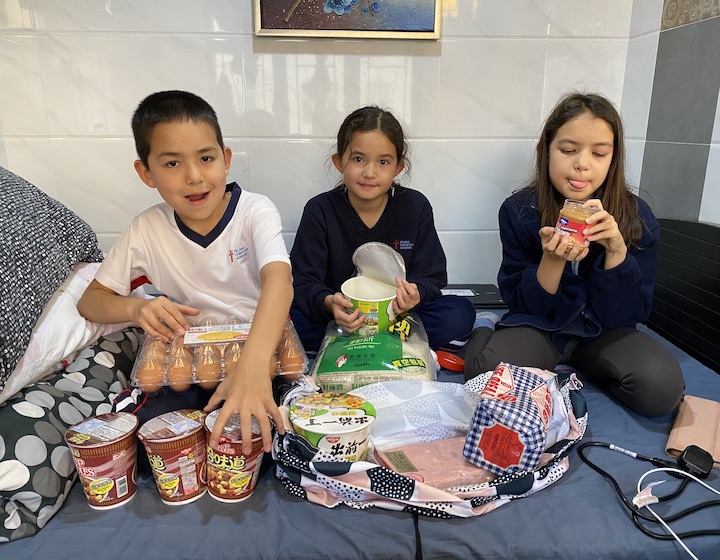
Why Did This Hong Kong Family Try To Live Like Refugees?
There is nothing special about the Walls. They are not radical in their beliefs nor committed to activism nor do they have a penchant for extreme experiences. Instead, their family is very much like yours and mine. They live a comfortable life on the Southside of Hong Kong island. The children, aged between 8 to 10 years, attend an international school, love to play sports, have sleepovers, and go on holidays to visit relatives in Australia. But this ordinary family undertook an extraordinary feat of compassion when they decided to walk the talk.
Like many expat children, the Wall children are not frequently exposed to the underprivileged in the city. “It is unrealistic to expect my children to create an empathetic piece of schoolwork on refugees when they have had no contact with these individuals whatsoever,” Bernice pointed out. “So instead of staying in the safety of our home, we ventured outside our bubble.”
Read More: How To Avoid Bringing Kids Up In An Expat Bubble In Hong Kong
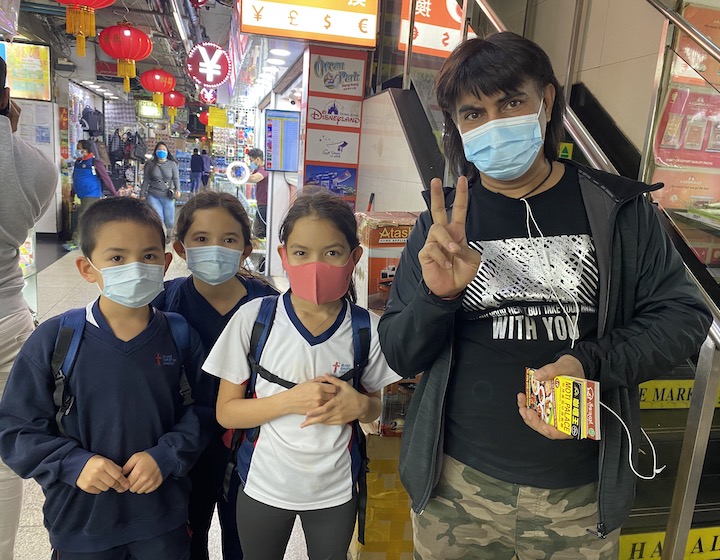
Preparing For The Refugee Simulation Exercise
Prior to their simulation, the Walls studied as much as they could about Hong Kong’s current refugee situation from two resourceful websites: UNHCR Hong Kong and Branches of Hope, an NGO aiding refugees, asylum seekers and victims of trafficking. A refugee, they learned, is someone forced to leave his or her home country, and unable to return due to a well-founded fear of persecution on account of race, religion, nationality, political opinion or membership in a particular social group. To be officially granted refugee status, you have to fit into one of these five categories. The Hong Kong government provides services to refugees, among which are the following subsidies per month: $1,200/adult or child in food allowance (distributed by supermarket vouchers); $1,500/month/adult as housing allowance (and an additional $750 for every dependant child); and $200 to $300 for transportation (these rates can change, refer to this website for details).
The Walls chose Chungking Mansions, a place popular with backpackers and college students on small budgets because it is frequently the initial landing spot for asylum seekers. For their simulation, the Walls remained as much as possible within a refugee allowance for five days. This meant $160/day for food and $125/night for a place to stay for Bernice and three kids (her husband was supportive but unable to join because of work commitments). Bernice was prepared to sacrifice some of the food allowance and spend it towards a better room with its own bathroom. Even with this, all they could afford was a 70-square-foot room and a partitioned toilet with a single shower hose hung above the water tank. The room was just big enough to fit two single beds side by side. Since there was little floor space to stand, the four of them utilised the beds for sleeping, eating, playing and online school learning.
Read More: How To Talk About World Events And Raise Informed Children
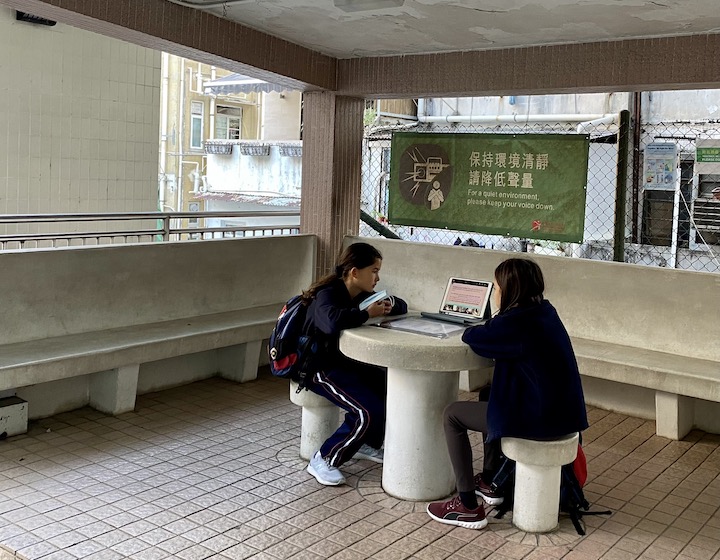
Lessons To Last A Lifetime
“It was bittersweet at the end of five days when we got to go home. We were so relieved to leave but also sad about the refugees we befriended and left behind. We realised we only survived because there was a definitive end date,” Bernice recounted. Bernice and her kids shared numerous and invaluable lessons from their simulation. They experienced real kindness when some restaurants and people gave them a free meal, the children became closer than ever before and they got a practical understanding of what can help families in need (rice is often the most treasured commodity). Besides this, there are three takeaways in particular which are, in their words, “Forever etched in our memories and which we take home with us.”
Read More: Domestic Helper Resources — How To Help Your Helper

 The Pain Of Food Insecurity
The Pain Of Food Insecurity
The first takeaway is that the family developed deeper compassion for those suffering from food insecurity. “Food insecurity is a term we often hear, but for the first time in our lives, we felt the panic of not knowing where our next meal is coming from.” Bernice recalled going to the supermarket at the beginning of their simulation and purchasing a week’s worth of rations. They bought a 5-kilo bag of rice, a loaf of bread, a jar of peanut butter, 30 eggs, 3 Cup Noodles and a few tins of spam (shopping at a wet market would have got them more, but they wanted to stay as true as possible to the voucher system). They kept aside some money for an emergency. Having sacrificed some of the food budget early on for a slightly better room also played a role in their situation. Bernice didn’t eat much so her children could have more food. “The children even bargained with shopkeepers to buy food. We felt humiliated but it was the only way to stretch our dollars.” And when shopkeepers refused to lower prices, they resorted to free meals provided by organisations such as YWAM Shanti and YWAM Tuen Mun.
“Our day revolved around looking for the next meal. The irony is even though there was a free meal available in Tuen Mun, it was too expensive to get there from Tsim Sha Tsui on a refugee’s transport stipend.” They carefully considered whether the free meal was literally worth the trip, and the rumble in their stomachs decided for them.
The Walls went on walks around the West Kowloon neighbourhood when they finished online school. “I experienced a heightened sensitivity of the wealth divide in our city. Just two streets across from Chungking Mansions were signs of exuberant wealth: five-star hotels and high-end malls, though we only had eyes for food stores, patisseries and bakeries, which we couldn’t afford. It was frustrating and depressing and we felt more hungry than ever.”
Refugees are not the only individuals suffering from food insecurity. In fact, according to statistics provided by Feeding Hong Kong, 1 in 5 individuals in our city are living under the poverty line and experiencing food insecurity. If you would like to help to alleviate food insecurity, contact these organisations that collect food donations for further distribution to needy families. They are (but are not limited to):
- Feeding Hong Kong (distributes to front line charities)
- J-Life (distributes to Sham Shui Po community, and other Kowloon districts)
- Barnabas’ Society and Home
- Food for Good
Read More: Where To Donate In Hong Kong — Clothes, Toys, Furniture, Books And More
 Take A Break, Before You Break
Take A Break, Before You Break
The second takeaway, in particular for Bernice, is how immensely helpful it was to have a few hours of emotional and mental rest. She remembers day four was the most difficult of their 5-day simulation. One of the children was scheduled to attend school on campus. Since Bernice couldn’t leave the other two unattended in Chungking Mansions, they all travelled to school together. While their brother was at school, the other two children logged into a free wifi network at a park to continue online school learning (pictured above). Bernice recalls, “I wasn’t eating much and felt very cold that day. My resolve broke and I called a friend and asked if she would adopt a refugee family for three hours.” The friend welcomed them to her house where they enjoyed the luxury of a hot shower and a clean toilet and wolfed down a hot meal. “I cried uncontrollably. For the first time in days, I felt I could relax. For a few hours, I didn’t have to think about food and the safety of my children.”
We all have stresses in our daily lives. Combined with worries about safety and sustenance, you can imagine what it often feels like for a refugee every day. Even the slightest bit of support and comfort can help. And that takes us to the next point…
Read More: Sassy Mama Supports — Pathfinders Hong Kong
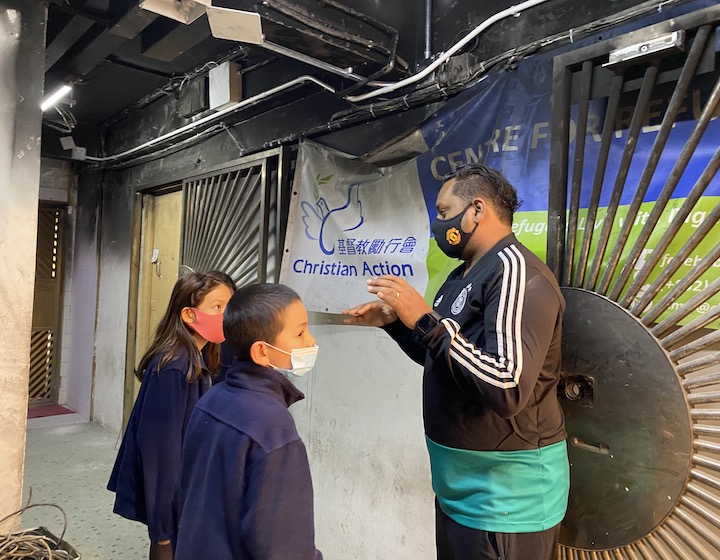
 Everyone Can Make A Difference
Everyone Can Make A Difference
The family’s third takeaway is understanding how they could help refugees. “As a family, we want to provide comfort and relief for the mothers,” said Bernice. “It’s as simple as taking care of someone’s children for an afternoon and providing a safe place to play, learn, and eat. This small action has a big impact. Even temporary relief is better than no relief at all.” To this end, the Walls have returned for informal visitations with refugee families through the NGO at the forefront of aiding refugees and asylum seekers: Christian Action.
At the beginning of the week when the Walls arrived at Chungking Mansions, their room was serendipitously located next to Christian Action’s Refugee Centre. The Centre was established in 2004 and is the first community centre to provide meals, clothing, and day shelter for refugees. At first, the Walls were overjoyed to learn of Christian Action, expecting to receive free meals. But they soon discovered due to a faulty electrical circuit, the Centre burned down in Q3 2020. They did not get to have free meals, but more devastatingly, neither did the 600 individuals who rely on the Centre for food each month.
“I was shocked at the extent of the devastation of the Refugee Centre. All the walls were grey and charred, as were the floors. There was no equipment or furniture, and exposed wires hung from the ceiling and off the walls. It was just an empty, dusty, dark room, and Christian Action didn’t have any funds for the repair.”
It was then that Bernice’s twin girls decided to launch a fundraising campaign on behalf of Christian Action’s refurbishment of the Centre for Refugees. If you would like to join their efforts, please do consider backing this SparkRaise campaign (the girls have got so close to their target!).
Read More: Child Psychologists, Counsellors And Therapists In Hong Kong
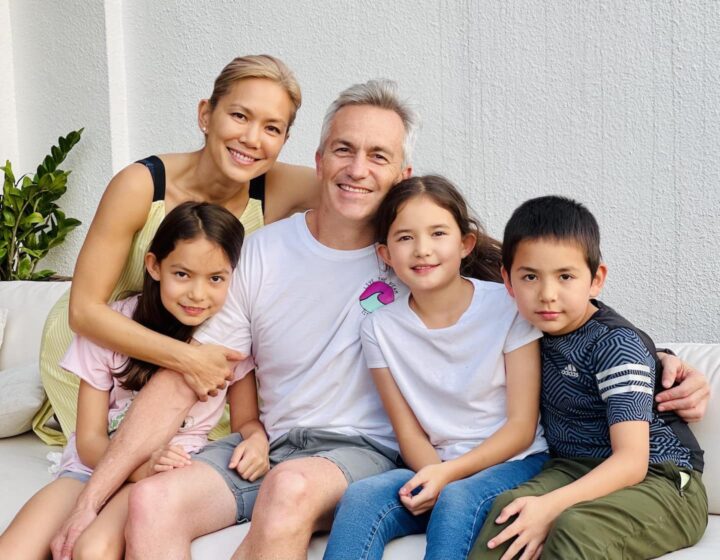
How To Help Refugees In Hong Kong
Are you looking for an opportunity to show tangible kindness to the underprivileged? Besides Branches of Hope and Christian Action, you can also consider ImpactHK, an NGO which organises Kindness Walks in aid of the homeless, in partnership with HandsOn Hong Kong. Volunteers walk the talk by distributing essentials such as a cup of water, bananas and hard-boiled eggs in our city’s neediest neighbourhoods. If you’re interested, you can also suggest that your organisation does a private kindness walk with ImpactHK’s Founder, Jeff Rotmeyer.
Or are you, like Bernice’s family, interested to walk a mile in someone else’s shoes? Crossroads Foundation organises simulations to explore global poverty issues amongst other experiences. The goal of these simulations is to work with people in need to bring alive the dilemmas they face. Though the simulations may fail to give a realistic representation of the situation, done appropriately and in a respectful manner, it allows participants a deeper understanding and identification with those who suffer.
Last year, Asylum Action, a student-led NGO organised the “Live Like a Refugee Challenge” in collaboration with a number of schools and organisations. Proceeds from the event were donated to the Refugee Union. For the 3 to 5 days of the challenge, the participants could spend approximately $40/day on food and $10/day on transport. They were encouraged to document and share their thoughts and experiences. After the challenge, almost all of them agreed that participating in it had changed their conception of the refugee community and brought alive their everyday struggles. Many agreed to go on to support refugee-related NGOs through volunteering or donations. This year too, there will be a similar challenge in mid-July, so get in touch if you would like your children to participate.
RUN Hong Kong is a charity that works towards rehabilitating refugees in Hong Kong while helping them rebuild their physical and mental strength. You could volunteer with them and offer a variety of services, from assisting their sports programmes, taking care of young children while their mums participate, mentoring a refugee, etc.
Choosing to walk in someone else’s shoes is a powerful tool to learn compassion and empathy. Though the Walls’ “walk” has ended, their journey of spreading awareness and influencing more people has just begun.
Read More: Where To Volunteer In Hong Kong — Nonprofits, Charities & Organisations
 View All
View All

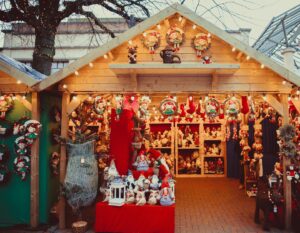

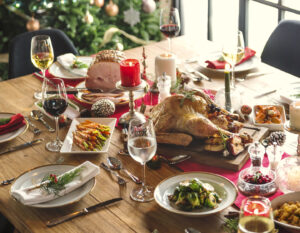





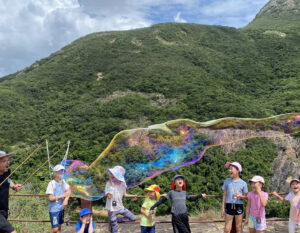
 View All
View All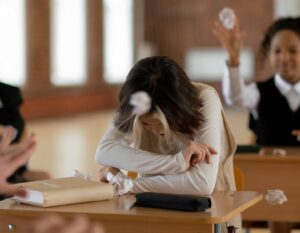




 View All
View All
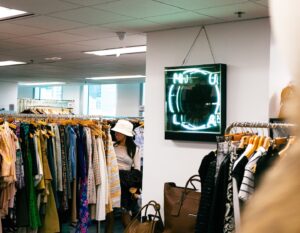

 View All
View All